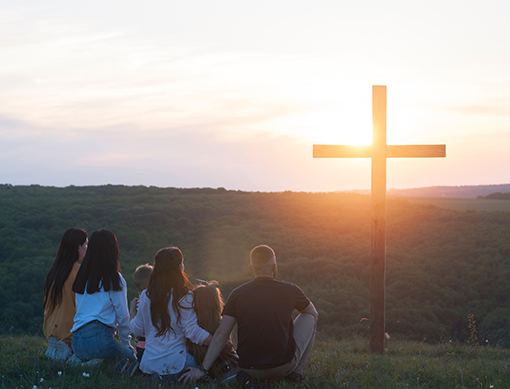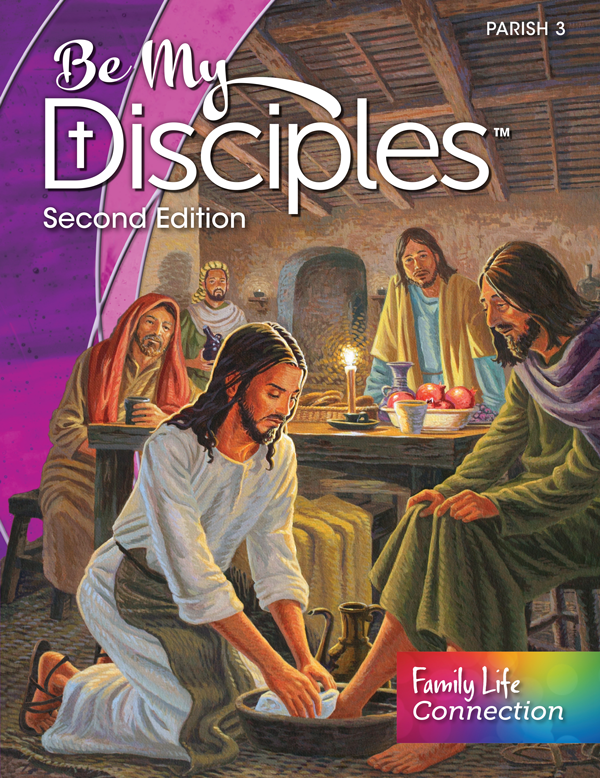by Dr. Lauri Przybysz, D.Min.
Over the centuries, Christians have learned that certain practices or disciplines help keep the spiritual channels open and help keep their heart turned toward God. One of the important spiritual disciplines practiced throughout Christian history is the Pilgrimage.
A pilgrimage is more than an ordinary road trip. It is travel with a spiritual purpose. When we go on a pilgrimage, we visit a location with spiritual value and meaning. Usually, people go with a group of friends or family. Sharing the journey can be just as beneficial as arriving at the end. With a pilgrimage, the destination is important, but we know that much good can happen along the way!
Often people make pilgrimages to famous Christian shrines or churches. Your students can practice pilgrimage right on your school campus. When the weather is fair, plan a walk from your classroom to the parish church or a Marian shrine on the property. Take the long way around. When everyone arrives at the destination, lead the students in prayer.
Visiting online can be meaningful if we have the right intention. For example, invite students to take a virtual tour of the National Shrine of the Immaculate Conception in Washington, D.C.
Another kind of pilgrimage may be to a place that has personal spiritual significance because it holds good memories for us. For example, we could visit our childhood home or grandparents’ house.
Pilgrimages require planning and preparation in advance. Some planning is practical to ensure a smooth journey. Other preparation is spiritual, readying our hearts to receive the graces God wants to give us along the way and when we arrive.
Play a Pilgrimage Game: One person is going on a pilgrimage, and each person has to say what they are bringing along. This game can be played with two or more people.
- First, identify the destination for the pilgrimage.
- Each person thinks of two people they will pray for when they get there.
- Player 1 starts by saying, “I am going on a pilgrimage, and I will bring… (and chooses an item, e.g., sandwiches, extra socks, a rosary, flowers).
- Player 2 then repeats what the first person said and adds something of their own. So, for example, “I am going on a pilgrimage, and I will bring some sandwiches and some flowers.
- Player 3 (or back to player 1) then repeats what the first person said; then the second person adds something of their own. So, for example, “I am going on a pilgrimage, and I will bring sandwiches, flowers, and a blanket.”
- You keep going like this for each person around the circle, and it gets more challenging to remember every item as you go. The round ends when someone cannot remember them all. Start another game if you wish.
 About the Author
About the AuthorDr. Lauri Przybysz specializes in equipping families to live their vocation as domestic churches and signs of God’s love. Lauri received the Doctor of Ministry from the Catholic University of America, and she has been both a Catholic middle school religion teacher and a faith formation coordinator at the archdiocesan and parish levels. She is the mother of 6 children and grandmother of 21.
Product Highlight
Be My Disciples Second Edition
Religious Education for Parishes
This new Parish Program for grades 1-6 now includes the Family Life Connection, a fantastic family resource built right into the Student Edition textbook! Students will take home this two-page insert to help them build the skills they need to live healthy, holy lives. This newly updated and expanded edition encourages children to understand their role within the parish community and continue to grow in their identity as sons and daughters of God.
